|
TennisOne Lessons
The 8Board Experience: Got Serve? by Jack Broudy
Let's face it, pros and even a majority of amateur players live and die by their serve. So what makes a great serve? Is it just power? Sampras never had the fastest serve on tour, but it was certainly the most feared. Great servers like Sampras hit the big ones even under the most pressure filled moments of a match. How do they do it? It's all about placement, power, and percentage. There's continuity, a seamlessness of motion, found amongst the best servers, not really that different than you'd see watching the bow movements of a concert violinist. This science of fluidity, we call "dynamic balance" can only be fully explained by an understanding of the principles of the geometrically based, 8Board ® Body Motion Coordinating System T. The essence of the serve is the "ball throw," and the best ball throw is initiated in the hips and it is effortless. The actual motion is continuous, slow, and balanced. The best throwers allow their movements to be driven by centrifugal force and not muscle. Both sides of the body are active and balanced throughout the throwing motion. The non-dominant hand is actively maintaining balance during the motion.
The following view-point is based on the principles of that system, describing "nonlinear motion" and "dynamic balance". If you are not familiar with the 8Board Tennis System read my previous article, Nonlinear Operating System which goes into greater detail of the following two key principles:
The serve is produced from the "innermost center" of the body. Imagine a thin pole drawn from the center of your head down through your body, creating your vertical axis. Once this axis is established, you then have the ability to create "dynamic balance", which is balance in motion. The hips move in a figure 8 around this center. The arms and legs move in a larger figure 8, in what we call "contrary motion", compensating movement off of the hips. The arms are literally "dragged" by the hips.
The hips must move in a slow, continuous and fluid fashion around the vertical axis. The figure 8 seen in the motion of the hips, if done correctly, can be seen in both the vertical and horizontal planes. Look carefully and with a little imagination, you can see the figure 8 (sideways) in this hip rotation. The idea is that the smallest movement in the center ripples out sequentially, to the outer portion of the body much like dropping a pebble in a pool of still water. The rings start off small and as they make their way out from the center, grow larger as they keep their "roundness" in tact. Like cracking a whip, a little movement in the center creates a bigger, more powerful movement at the periphery. The essence of the outstanding serve What's dousing most players' chances for a decent serve is the conventional thought process they're stuck in. Somehow most of the tennis world has it in their heads that the serve is divided into two parts; (1) the toss and knee bend and (2) the "extension up" into the hit while snapping the wrist down. For most players, this thinking creates a "hitch" in their serve motion - a weakness caused by the entire body not being ideally coordinated and balanced. This in turn, usually results in a service breakdown.
On the Pro level, the serve makes or breaks a player. In recent years, the players on top all had a weapon in their serve: Andy Roddick, Ivan Lendl, Pete, Sampras, Andre Agassi, Pat Rafter, Roger Federer, Mark Philippoussis, John McEnroe, and the list goes on. It's quite obvious what separates Andy Roddick from the rest at the moment? Is he really that much better than Nalbandian, Blake or anyone else in the top twenty? Even a novice can see it's his serve that makes the difference. Other players are constantly plagued by their serves: Elena Dementieva, Anna Kournikova, Martina Hingis, Jelena Dokic, Conchita Martinez, Arantxa Sanchez-Vicario. Martina Hingis' weak serve is what kept her from winning a Major for three years. Kournikova could have been winning 50% more matches if she didn't serve up a dozen or more double faults per match. So many players double fault on the pressure points. Even Patrick Rafter left the game prematurely, primarily because he hit a big serve through a somewhat imbalanced stroke, using too much upper, rather than lower body.
The Sampras Serve Let's see how the figure 8 and the 45º relate to the great and not-so-great servers in recent years. Let's start with the master of effortless power, control, consistency and disguise on the serve: "Pistol Pete" Sampras. Pete begins the swing, left foot toe up, eyes looking towards the net, back foot almost parallel to the baseline, knees flexed. His left foot pushes down into the court, engaging his hips (initiating the figure 8 motion). Pete's arms move with the small movement of his hips. Notice as the ball leaves Pete's tossing hand, his hips are lined up with the net post (45º). The palm of his left hand faces up, while the palm of his right hand is facing down, polar opposites once again playing off the hips. Pete is balanced here, between the coil in his arms, as he continues to pull his hips through and into the court. Notice how his hips and shoulders are both slanted up before the hit. As he finishes his rotation, passed the 45º and into the court, Pete's eyes remain up as he retracts his left arm in towards his chest, and contacts the ball right at the 45º--the plane that bisects the net and the right side fence. Pete finishes the stroke gently as his hitting arm just fades after the hit. Pete's arms primarily hold him in balance as his hips move in his figure 8. He creates a wave from his body's center up into the ball, all at the 45º.
The Agassi Serve Pound for pound, Andre Agassi has one of the best serves in the game with a first serve percentage, sometimes as high as 70-80%. He gets his share of aces too. Technically he has a sound serve as well. Watch how his hips never stop, how the white stripe on his shorts leg move continuously throughout the serve. At ball toss his left hip and arm are lined up with the 45º, arms both held in a round coil, one palm up, one palm down. Finally his hips push forward, over the baseline, creating a "bow-like" effect, and then turn in towards the net, carrying the hitting arm behind them. See how his left arm retracts towards his chest keeping his balance and orientation at the 45º, immediately after the contact, eyes still gazing up through the 45º. Andre, like Pete, doesn't merely bend his knees and transfer his weight up, or forward for that matter, he "cork-screws down into the serve, and then cork-screws up out of the serve. This "full body" figure 8 motion is what catapults him up off the court, leveraging all of his weight into the serve. The Hingis Serve Martina Hingis is one of my favorite players, however, she could certainly use some help with her serve? Although the rest of her game was geometrically sound, Martina's serve held her back towards the end of her career.
There are so many things wrong with Martina's serve its no wonder she barely hit past 80mph. She starts by lifting her front toe (not pressing down like Pete), that causes her hips to lock in place. Now she's moving from the arms first (the tail is wagging the dog so to speak). She continues to lead throughout the stroke with her arms. Martina's ball toss is not set up from the hips or at the 45º. She over-rotates and pulls her hips out of the serve too early and is no longer balanced on the 45º when its time to make contact. She's literally falling out of the serve; eyes looking down, left arm pulls down (and not in towards her chest,) she's collapsing at the waist, and her hitting arm is up there--alone. The result is, there's no weight wielded into the racquet, she's off-balance, and therefore it is almost impossible for her to get any power, control, or consistency to her swing. She certainly did not line her serve up to the 45º nor did she use her hips to generate power: just bent her knees and swung her arm. The Hantuchova Serve
Although Daniela Hantuchova is a dynamic new player on the scene, she gets almost no help from her serve. Talk about not serving from the core, watch how she's almost to the ball release in her toss before she even moves her hips. Her left hip never even gets to the 45º. Once again, like Hingis, she bends her knees and tries to pump her legs up into the serve, but there's no horizontal action, no twisting of the vines, no screwing down or up; she gets no centrifugal force. You can see somewhat of a collapse at contact as her left arm comes down too early, her eyes pull away from the hit, and there's no leverage rising up into the hit. She does however make contact (and line up her hips) with the ball at the 45º, so it's not quite as off-balance as Hingis' contact point. In closing this particular segment, I'd like to say, keep it simple. Try not to get caught up in over-stylized serves that lose the essence of the perfect throw. Bringing your feet together is a style, and should not be taught as a part of the serve. The knee bend, as you see in the examples above, does not necessarily transfer weight into the ball unless it is created properly, through the figure 8 action of the hips. As with all of the strokes in tennis, the serve is best performed when done so effortlessly. Half of today's amateur players leave the game because of poor functionality in their serves. Don't be a tennis casualty. Learn to throw a ball. You'll stay in the game longer and enjoy it more. Your comments are welcome. Let us know what you think about Jack Broudy's article by emailing us here at TennisONE 8Board Tennis SystemIf any of my articles regarding the nonlinear game and the 8Board® Tennis System strike a chord in you, whereby you can see the wisdom and intelligence in the game, please join us at our Grail Tennis Winter Forum in Southern California, January 11th and January 18th.
Broudy began working and collaborating with Paul Mayberry 10 years ago. Together they developed the 8Board Body Motion Coordinating System of training that has allowed Broudy's students to play World-class tennis and become national tournament winners. Currently Broudy coaches nationally ranked juniors and touring pros at the Four Seasons Aviara Resort in Carlsbad, CA. The author of The Real Spin on Tennis, Broudy is also a contributing writer for Tennisone.com, a tennis player, surfer, and musician. He serves as president of Grail Sports, Inc. |

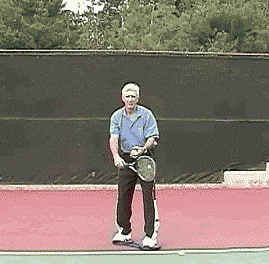
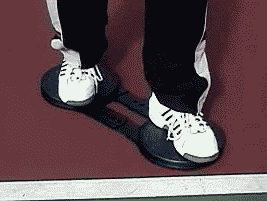
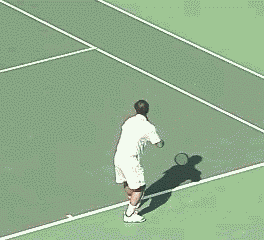
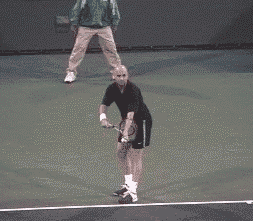

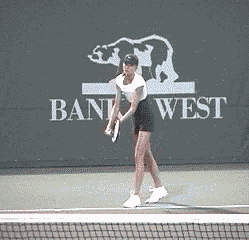
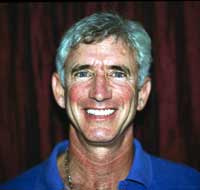 Jack Broudy was born and raised in Stamford, Connecticut and although he was active in many other sports activities, decided at age 14 he would pursue tennis as a career. He played in National Junior tours, the NCAAs, won many titles as a kid and went on to play winning tennis though his college years both at the University of North Carolina at Chapel Hill and UC San Diego.>
Jack Broudy was born and raised in Stamford, Connecticut and although he was active in many other sports activities, decided at age 14 he would pursue tennis as a career. He played in National Junior tours, the NCAAs, won many titles as a kid and went on to play winning tennis though his college years both at the University of North Carolina at Chapel Hill and UC San Diego.>